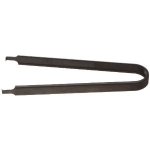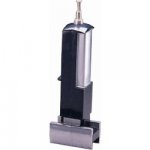...I will ... get those ROM chip numbers next week (As I recall though, they were MPS 6540 but I am not totally sure).
They are generically indeed 6540s, but the contents are different in each one. There will be at least one other number (probably in the form 020 3980A or 901439-13) that will identify the specific ROM contents; this will tell us which version of BASIC, whether all ROMs are standard and, if you tell us the column number, whether each one is in its proper location. Never hurts to check the basics ;-) .
The F cables connect from the PSU to the expansion board and then to the main board, I assumed that was just power but it does feed to the expansion board first.
The rear connector does look like the original power cable coming from the off-board filter capacitor; the one marked F1 looked like it had more pins, but if it also has five pins and only goes to the original five pins on the main board then you could probably just remove the cable marked F1 and connect the cable from the capacitor directly to the main board. Dave's advice to make lots of notes and take lots of pictures is excellent advice, but as it happens the power cable in question is symmetrical and can be plugged in either way.
Do check that the connectors really make good contact; that was one of the weaknesses of the old PET, usually evidenced by charring and signs of overheating on the board around the connector.
I believe the expansion board says COPYRIGHT 1978 R. C. FACTOR but I will have to check again when I am back in the office next week.
I don't recognize it; anybody else?
I disconnected the expansion board as suggested, I just removed the ribbon cable but left the power cables where they were as I wasn't sure about their orientation. The screen came to life! I must admit I got a little excited.
Don't blame ya; sounds like good news! Looks like without the extra board we've just got the classical old PET problem, probably a bad socket or a bad ROM or RAM chip. I don't suppose there's anyone else in your part of the world with a similar PET with whom you could get together?
The usual first step is to
carefully remove and replace all the socketed chips; before you actually remove them and risk bending/breaking a pin you could try just pushing them back and forth in their sockets.
Buying a PETvet as suggested would probably make it easier (as well as expanding memory and giving you some options), if that's an investment you don't mind making.
Good luck!


